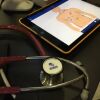The Automatic External Defibrillator is one technology that not only saves lives but has changed our culture. It broke down barriers between EMS and the Fire Service, creating new relationships and opportunities for widespread system improvement. I can’t think of another example of a device that so dramatically changed our industry.
It pulled many fire departments under the umbrella of EMS medical oversight for the very first time. With new perspectives and greater confidence, many moved into delivering primary EMS. Today more than half of all ambulances carry FD markings, and I’m pretty sure we have, in part, the AED itself to thank for it.
In the 70s and 80s, our metropolitan fire departments had little to do with patient care. They had given that up years before, and had little interest. But with greater density placement they had undeniably better response times, often fuming by the time EMS finally showed up. This all started to change with the AED. Now Fire departments by regulation needed a Medical Director in order to deploy AEDs. Now they had oversight. Now they had a certain amount of medical and legal liability during consistently worst-case-scenarios, like cardiac arrest.
Pretty soon many figured out that if they could handle the codes they sure could handle the walking wounded. On the flip side, fire calls started going down. Before long they wanted back in the patient transportation business. The AED had an undeniable role in all this. It prompted the fire service in many areas, to reevaluate its role and expand its mission. This was not quickly embraced; to the contrary EMS integration into the fire service was often resisted.
The first AED I remember was the FirstMedic 610. It offered automatic self-testing, a real breakthrough at the time. Along with the Laerdal Heartstart models, these earliest AEDs suffered from too much input from advanced providers and not enough from basics. Many had ECG screens and printers, voice recorders, and other added features that made these devices heavy and cumbersome. Then along came the AED built into an Ammo Box; the FirstMedic 510.
This basic, rugged AED proved that firefighters could treat cardiac arrest effectively. Soon the other manufacturers were making what the market actually needed. Models quit trying to be “Paramedic Lite” machines and AEDs got simpler, with actually fewer features. They became nearly foolproof, lightweight and very simple to operate. Physio-Control offered a series of well-engineered models like the Lifepak 300 and its many successors. Today we even have the Phillips Heartstart Home, a defibrillator approved by the FDA for home use.
What is truly amazing is that this entire evolution took place in less than 20 short years. In less time than it took to put a man on the moon, we put an AED in every airport, stadium, and fire truck. We identified a promising technology, and then rapidly evolved its design and application to its most efficient and beneficial application. Makes you think, doesn’t it? If we had a grand plan, nobody shared it with me at the time. Nevertheless, we somehow did the right things the right way. Our industry, despite the many inherent obstacles and challenges, embraced this new technology and put it to best use.
At the time this was not without considerable threat to our very profession. I remember those who said “with AED and shorter response times ALS will become obsolete.” But we knew that no machine could replace us, so we accepted and often lead our communities in developing Public Access Defibrillation Programs. In a few short years we all had stories of AED saves, each one a testament to our commitment. The determination of EMS professionals to improve care and save lives trumped politics and even financial challenges.
It happened slowly, one city at a time. The job was creating awareness, raising money, establishing medical authority and legal protections. In every state and community there were many who said it could not be done or should not be done. But in the end, we got the job done and resisted every discouragement.
Today thousands are alive who otherwise would not be. Many in the EMS community were at the forefront of these efforts. We can be proud of our role evolving today’s modern AED.
As we consider other new and developing technologies it might be beneficial to remember this experience. It showed us what can be done when innovation and determination are combined. Sometimes the outcome is unanticipated. I don’t remember anybody accurately forecasting the long term impact of the AED on the fire service. But in many communities, citizens are getting better care as a result. These improvements in quality have also produced better opportunities for those in our profession. Perhaps not the outcome anybody expected, but one that’s pretty easy to live with.












